Why beekeeping books?
I mean, didn’t the internet replace them? It sure seems that way, but that’s not entirely true. Web searches have definitely made beekeeping information more accessible. We cannot deny that.
As a beginner, you’re extremely fragile. Beekeeping requires a pretty steep learning curve, and the last thing you want is to make mistakes even before you have started.
It’s a lot harder to go wrong with books since publishers do not like failures. By the time it gets to you, you’ll notice that it has accolades from journals and industry leaders. That right there is a quality guarantee.
Your search engine may anticipate what you’re interested in, but it only helps if you know what you’re looking for.
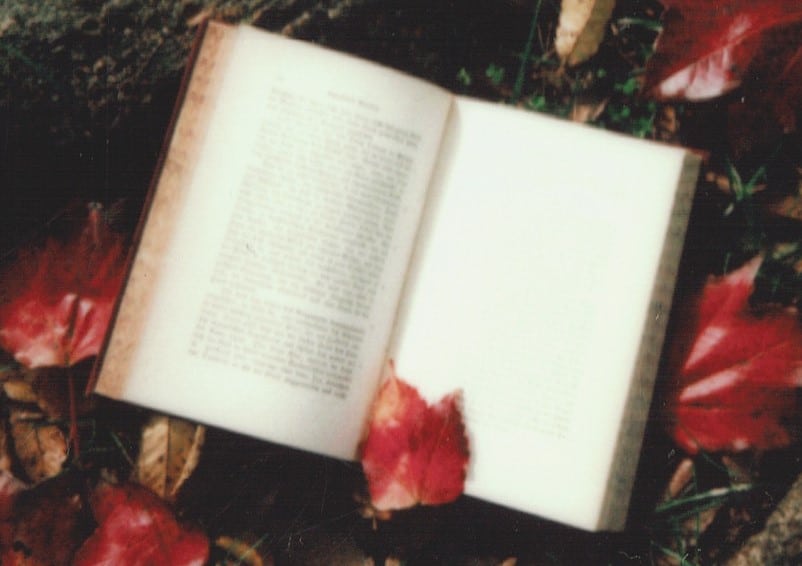
As a beginner to keeping bees, you don’t know much more than what you do, so you may not even know what to key into your web search engine.
With a good beekeeping book, you get more information about what you know, what you thought you knew, and a great deal of stuff you didn’t even know existed.
Books about beekeeping may have changed in form, but they are timeless gems.
12 Best Beekeeping Books for More Beekeeping Knowledge
The following beekeeping books are not arranged in order of priority. I like to think of them as a starter kit for your beekeeping library.
#12 – Homegrown Honey Bees: An Absolute Beginner’s Guide to Beekeeping Your First Year, From Hiving to Honey Harvest
If you are completely new in the world of beekeeping, grab yourself a copy of homegrown honey bees. It’s the gateway to the beekeeping world, designed specifically for the absolute beginner.
Being a sucker for movies that start with “inspired by true events,” it’s not a mystery why this book is so relatable.
Not only do they give you step-by-step guides on what to do as a beginner and how to do it, but they share their personal story of loss and triumph.
Homegrown Honey Bees is a wonderful book with beautiful pictures that really whets your appetite for beekeeping. And when you look inside, I bet those photographs will have you in awe! To be honest, I might have bought the book just for the photos.
One thing you’re bound to hear time and time again, the first year is truly the hardest. Most of your learning will happen within the first 12 months. Without a mentor, it’s really easy to lose your bee colony.
This top beekeeping book will be your first companion, showing you what to look for when you open the hive, helping you identify the members of your colony, and so much more.
Homegrown Honey Bees by Alethea Morrison really shows you the ropes and makes the experience of learning to keep bees as a beginner so much fun.
Three reasons to read this beekeeping book
- An absolute must for a beginner
- So easy to read, you can share it with your children
- Wonderful photographs that help you understand the ‘how-to’ of beekeeping.
#11 – The Beekeeper’s Handbook (4th Edition)
The Beekeeper's Handbook should be on your starter kit checklist. When you’re arming yourself to start this wonderful hobby, you need a guide to walk you through the process, from setting up a hive and installing a colony right through to harvesting your first yield, and this fourth edition does just that.
The language used is simple, and the numerous illustrations really drive the main points home. And let’s face it, reading prose can get old really quick.
That’s why I prefer texts that have bullet points, making it easier to retain the rich content you will find in this book.
The Beekeepers Handbook comes highly recommended for the novice beekeeper but is great as a reference book thereafter, so you will be together for a long time.
Being in its 4th edition, it also discusses some of the new challenges faced by bee-keepers, such as Colony Collapse Disorder (CCD) and mite resistance. It’s also worth noting that a book in its fourth edition must have very helpful content in the first three. Otherwise, why would they bother?
The Beekeepers Handbook serves as an easy manual to follow from your very first hive and helps you understand more about bee biology.
Three reasons to read this beekeeping book
- Easy to read by use of simple language and illustrations
- Great for a beginner, handy for the seasoned beekeeper
- The current edition has been updated to include current challenges, such as colony collapse
Make space for it on the bookshelf, even though it may spend more time in your hands.
#10 – The Backyard Beekeeper, 4th Edition: An Absolute Beginner’s Guide to Keeping Bees in Your Yard and Garden
This one here is another must-have in your knowledge tool belt. Armed with 40 years of experience, Kim Flottum understands the needs of a beekeeper very well.
The title of the book isn’t coined just for sales. The Backyard Beekeeper speaks the language of the newbies, making sure to use little anecdotes and relatable metaphors so that you’re not left behind.
The great thing is that he didn’t trade content for aesthetics. With this book, you get over 200 hundred pages of both the science and art of keeping bees.
Plus, the photographs are captioned to tell the entire story, not just “Figure 8: A hive”. That makes it great for referencing because, sometimes, you just need a quick glimpse to remind yourself of the instructions before you go to the apiary.
Another great thing about the layout of The Backyard Beekeeper is that it’s sprinkled with fun facts, helpful tips, and anecdotes that are great for breaking up the text so that reading doesn’t feel tedious.
There’s a section for urban beekeeping that I found particularly helpful, especially the benefits of a beekeeping community in that setting because the risk of honey bee-human conflict is quite high.
He also has very practical advice on how to keep bees despite the challenge of space.
One last selling point is that you can buy the soft copy version of the book for a fraction of the price you would have paid for a physical copy. Save money, save a tree, and save up on bookshelf space.
Three reasons to read this beekeeping book
- The layout makes for a fun read with interesting facts along the way
- Written with beginning beekeepers in mind
- A very practical beekeeping guide
#9 – The BeeKeepers Bible: Bees, Honey, Recipes & Other Home Uses
This is the beekeeper’s thesaurus. In fact, the quality of material used to print this book is built for numerous visits.
This isn’t a book for the slightly inquisitive or the idle mind. This is the book you get when you resign yourself to the adventure of the beekeeping business.
The authors of The Beekeeper's Bible tell you the whole story. Where beekeeping began, the changes and advances it has made, the ‘how-to’ guide of beekeeping, and finally, colorful and scrumptious ideas on what you can do with the final products.
Both beginners and professional beekeepers alike will find this book extremely resourceful. The Beekeepers Bible also makes a great gift for a beekeeper, assuming you haven’t been infected by the beekeeping bug yourself.
Even though it is a pretty hefty book, the beekeeper will find the language friendly and, therefore, easy to read it through to the end. This book is mainly geared toward Langstroth hive beekeepers, and with a name like “Bible,” it would have been nice if it had included other beekeeping options.
Even so, the information is invaluable and provides strategies to give your colony the best chance of survival and prosperity.
Four reasons to read this beekeeping book
- A very practical book with ‘how-to’ guides
- Rich source of historical beekeeping information
- A great referencing tool for beginners and seasoned beekeepers alike
- Goes way beyond beekeeping.
#8 – The Practical Beekeeper: Beekeeping Naturally
Now here’s an author who’s not afraid to break the rules. His views on beekeeping without chemicals are very different from the ideals that surround us. Even so, his opinions are well-informed and eloquently communicated.
Although the book is text-heavy, the table of contents reads like an FAQ page, and the rest of the book is easy to follow and understand.
It’s actually a collection of the posts he has published over the years. A lot of the information in the book can be found on his website, but reading the book is a much easier way to get around all the content.
What can you expect from The Practical Beekeeper? Well, he introduces you to the basics of bee-keeping, the players, namely the queen bees, drones, workers, and the beekeeper.
He goes on to describe the beekeeping scene as it stands now and the challenges that it is currently facing. This point brings out his need for a change in the way beekeepers operate in light of these new challenges.
My takeaway from this book is that bees already have solutions for the problems they are facing. We, the beekeepers, are just too stubborn or oblivious to simple solutions.
For instance, right at the beginning of the book, he says the simple way to deal with queen-related problems is to insert an open brood into the hive. That’s one I’m definitely going to try.
The Practical Beekeeper contains three volumes, that is, the Beginner, Intermediate, and Advanced Beekeeper. You can either order them separately or get this version that has all three as one book.
Four reasons to read this beekeeping book
- Get a taste of beekeeping without chemicals
- Get a different answer to some age-old questions
- Big font, so it’s easy to read
- It’s the alternative medicine equivalent of beekeeping.
#7 – Top-Bar Beekeeping: Organic Practices for Honeybee Health
Ever since the Langstroth was invented, beekeepers tend to use it as their primary choice.
Sure, it has a lot of advantages, but because it was so popular, it seems people only make a passing reference to other types of hives.
Anyone new to beekeeping would assume that the Langstroth is the only type of hive available. Crowder and Harrell introduce us to the world of the Top Bar hive. This is a great book for a beginner beekeeper or even one new to the Top Bar hive.
I find it particularly interesting for the hobbyist seeking to learn more about the natural tendencies of bees.
They have a lot more freedom to engineer their structures within this type of hive, and it is fascinating to see how they go about it.
There is a myth out there that natural beekeeping means leaving the bees alone, but this book shows that organic is pretty hands-on and guides the beekeeper on how to work best with the bees, what problems to anticipate and how to solve them.
Top-Bar Beekeeping is also an affordable option for the new beekeeper on a tight budget.
My takeaway is that chemical-free beekeeping is not only possible but viable, and it’s never too late to make the switch.
Three reasons to read this beekeeping book
- Great for the chemical-free beekeeper
- Expounds on the use of Top Bar Hives, which is not widely discussed
- Wonderful for beginners using other types of hives because many of the principles are applicable to the beekeeper in general.
#6 – The Beekeeper’s Problem Solver: 100 Common Problems Explored and Explained
Sometimes, all you need is to be pointed in the right direction. James Tew does just that with The Beekeepers Problem Solver. Right from the table of contents, you can tell this isn’t your typical textbook.
The approach taken makes it easy and quick to get the information you’re searching for. The Beekeepers Problem Solver is designed for the novice as well as the experienced beekeeper, so the language is simple and sprinkled with humor.
You could choose to read it from cover to cover or look through the contents and find your question, and you’ll have a quick answer.
If you find that the predicament you’re in isn’t covered in this book, then you may find solace in the resources section of this book.
This isn’t a ‘how-to’ guide on beekeeping. It’s more like a collection of commonly asked questions by beekeepers and helpful information to guide them to a solution. The photographs are wonderful and add to the digestibility of the text.
Three reasons to read this beekeeping book
- Designed to answer your questions clearly and directly.
- Great source of information for both beginners and experienced beekeepers
- Outstanding quality photographs
#5 – Beekeeping for Dummies by Howland Blackiston
No collection would be complete without a “For Dummies” book. If you’re on the fence about whether to be a beekeeper or not, then this book is probably going to push you to start.
Many authors of bee-keeping books recommend this book for beginners because it’s packed with information but lightly written. You won’t realize how quickly you get to the end of the book.
The first year of beekeeping is usually the hardest because that’s when you make the silliest mistakes.
Blackiston walks you through the basics with good humor, which helps you retain that information. If you didn’t, it wouldn’t be useful.
Beekeeping for Dummies covers the basic anatomy of the bee, all the different types of hives and how to work with them, the basics of bee behavior, and common challenges every beekeeper meets.
Beekeeping for Dummies comes highly recommended by most beekeeper associations. It’s a great way to prevent you from getting overwhelmed by purchase options.
By the time you’re done, you’ll have a better idea of what kind of hive you want, the type of bee you’ll house, where you’ll house it, and how to maintain your hive. This will be a true companion.
Five reasons to read this beekeeping book
- Easy and Fun to read
- The best companion for the yet-to-decide beekeeper
- Covers different options of beekeeping rather than just Langstroth
- The 4th edition includes current information on pests and diseases
- Includes Honey recipes for the adventurous, sweet tooth
#4 – A Sting in the Tale: My Adventures with Bumblebees by Dave Goulson
What’s good for the honey bee is probably good for all other types of bees. Sometimes we forget that all bees aren’t honey bees, and there are cousins of our hive companions that visit us, pollinating our gardens and not asking for anything in return.
So, during the winter, when your beekeeping activities slow to a crawl, take the time to broaden your api-universe, and dive into this book.
A Sting in the Tale is very well written with hilarious anecdotes, yet extremely informative and likely to transform your gardening practices just to attract more of these little guys.
The prologue is really what sold the book. Dave Goulson knows how to paint a picture with his words.
In the first few pages, you will laugh and sympathize with an adventurous boy whose great love for critters sometimes exceeds his common sense and lands him in hilarious situations.
Thereafter, you’ll get to learn about the bumblebee and its history. This is a great page-turner and fantastic for beekeepers and non-beekeepers alike.
Three reasons to read this beekeeping book
- Easy, fun, and humorous book for everyone who appreciates nature
- Learn about the Bumblebee and its benefits to you
- It makes a great gift for nature lovers.
#3 – Honeybee Democracy
This book is evidence that science is fun. Written for the layman, Thomas Seeley discusses bee behavior and helps us understand the politics of the hive. Yes, there is politics.
Many times we as beekeepers get caught up in perfecting what we do without pausing to think about why we do it. This provides a way that we can view our apiary through the eyes of a bee.
There’s a chapter on the dream home for honeybees. This kind of information really helps the beekeeper enhance the apiary for the maximum comfort of the bee. When your bees are happy, then they work optimally.
Even though this isn’t a how-to manual, I highly recommend The Honeybee Democracy for beginners who are new to beekeeping and looking to get a better understanding of bees.
The more you understand about the bees and their choices, the more astute your beekeeping practices will be.
I wouldn’t limit the audience to beekeepers and bee enthusiasts. It’s a great book for anyone, especially those whose loved ones are beekeepers and yet they are happy to observe from the sidelines.
Since it’s a scientific book, it’s text-heavy, but the writing is friendly and easy to understand, so don’t be deterred. I guarantee you’ll find a lot of interesting gems here.
Four reasons to read this beekeeping book
- Helps you understand bee behavior
- Written for the common man, not just those with a beekeeping background
- Useful for both beginners and seasoned beekeepers
- A great read for those who love science
#2 – The Buzz About Bees
Once you’re done reading Honeybee Democracy, you’ll want to move on to this great book. Once again, The Buzz About Bees focuses more on understanding honey bee biology rather than advising on how to keep them.
The photographs used are spectacular, and you will be immersed in the world of our favorite six-legged insect.
Learn more about how bees view flowers, the queen and her responsibilities, the construction of the comb, and so much more.
Understanding your bees is the best way to ensure that you are working with them, not despising them.
If you weren’t in love with bees before, you wouldn’t get past those photos without surrendering a piece of yourself to them. Above all, it’s a scientific book whose content has been thoroughly researched.
The language is also friendlier than you would expect, and that can be attributed to the author’s desire to distribute knowledge to a large audience, experts and laymen alike.
Three reasons to read this beekeeping book
- Fantastic Illustrative photographs
- Understand your bees to guide how you keep them
- Great source of information for both beginners and experienced beekeepers
#1 – Natural Beekeeping: Organic Approaches to Modern Apiculture 2nd Edition
Just like you need different kinds of food for your body, you need to enrich your mind with different ideas. It’s the best way to figure out what works best for you.
Ross Conrad brings to us a book on modern beekeeping that is inspired by long-term impact. As a beekeeper, he admits that he didn’t get into it early in life and was only inspired by the art through a moment of deep reflection. T
Through Natural Beekeeping, the author seeks to spread a message to change our actions because they are doing more harm than good. A significant portion of this book is dedicated to the ‘why’ question of beekeeping. As with most relationships, understanding the why helps guide you to the best possible ‘how.’
Why would thousands of colonies just start to die in some parts of the world and not others?
Why is the varroa mite, which wasn’t invented recently, killing so many colonies in some parts of the world and not others?
Conrad challenges both the beginner and the seasoned beekeeper alike with Natural Beekeeping. Even though to some, the book may come off as preachy, it is simply the passion of the author to inspire change.
Three reasons to read this beekeeping book
- The world is gaining an appreciation for organic, and so should you.
- Despite the seriousness of the issue, it is written with some humor making it an easy read.
- It’s never too early to go natural, so ideal for both beginners and seasoned beekeepers.
How to Make Use of These Top Beekeeping Books
First, start with the basics. Those absolute guides for amateur beekeepers are your first picks. There’s a tendency to subject yourself to a lot of pressure because you can’t seem to get the information you need fast enough.
For those beginning beekeeping, I would suggest that you start with the Homegrown Honey Bees and the Beekeeping for Dummies.
I suggest you get those two beekeeping books before you even get your hive. These books will help you with the setup decisions that you need to make as a new beginner.
Once you’ve got your hive and bee colonies, graduate to the other books to enable you to learn as you practice. The reason it’s important to start is to avoid the paralysis of analysis. If you try to get all these books down, you may never begin.
To start, let these secondary books be your tutor. Depending on the type of hives you have, I would suggest the Beekeepers Bible or/and the Top Bar Beekeeping book that you will refer to as you journey through your first year. The Backyard Beekeeper will also be helpful at this stage.
Then make your way through the rest of the list. The order is not important, and you’re not limited to just this list.
To be clear, I’m not suggesting you read anything else in your first year. Just get your practices in check as you strengthen your knowledge base.
Find out what your beekeeper mentors are reading and get their suggestions. Feel free to explore the land of other bees, such as carpenter bees and mason bees. There are a lot of fascinating players in the bee family, so enjoy getting acquainted with them, too.
In this adventure, your knowledge is your compass, and that is what will guide you.

P.S Don’t Forget About the Top Magazines for Beekeepers
Books are great, no doubt about that. The limitation is you have to wait years before a new updated edition avails itself. Meanwhile, the beekeeping scene is changing every day.
There are constantly new developments, studies, and challenges that you should know about. That’s why a subscription to a magazine can help plug some of those knowledge gaps you may have.
The great thing about columnists is that they are usually experts in their area who may or may not have written a book.
Reaching out to a publication allows you to get customized advice for your individual problems. That’s a consultation on a budget.
I recommend you begin with two:
- The American Bee Journal
- Bee Culture Magazine
You can also subscribe to your local association’s newsletter, which will be a great resource for local suppliers and advisors.


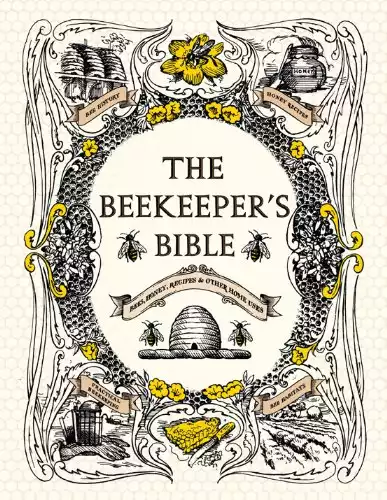
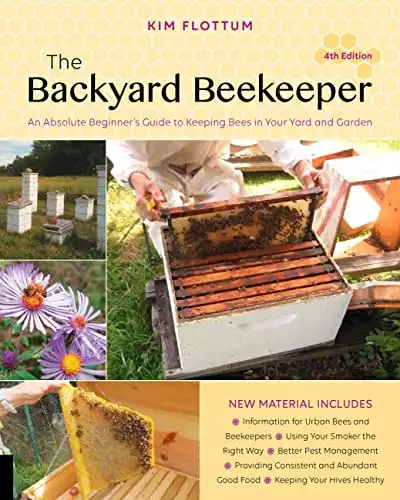



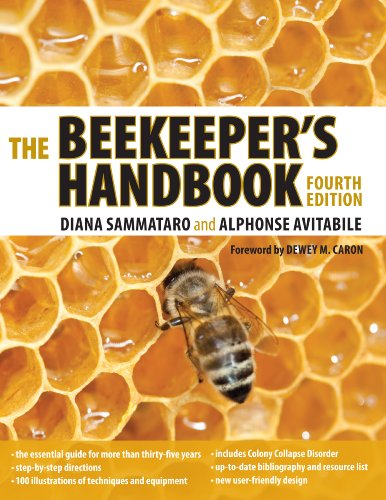


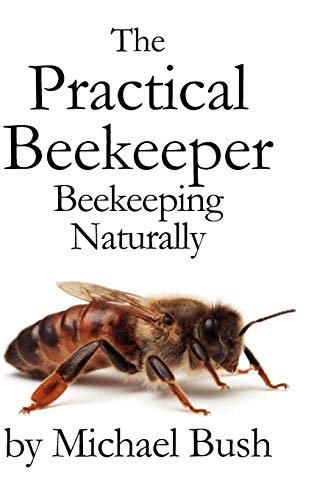






I have many beehives and get many questions from non bee keepers i look for cheep used great bee books to increase the knowledge of a beginner that has no bees yet if i can because we all had questions before we started and we need more good bee keepers and honey bees.